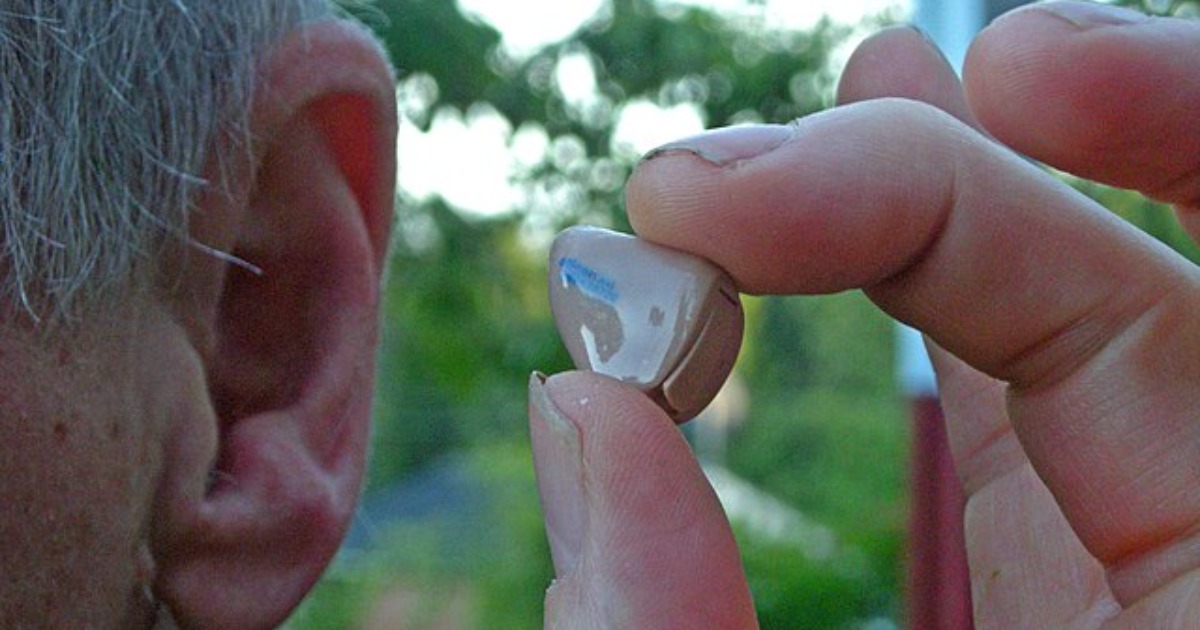Who Invented Hearing Aids? Let’s Read to Get the Correct Answer
- 01 Jul 2022 06:10
- 1187

Today, technology is developing rapidly. Therefore, more advanced devices are invented to overcome the effects of hearing loss, typically hearing aids.
You may wonder: "Who invented hearing aids?" or "When was the first hearing aid invented?" You do not need to be embarrassed if you do not have the answer.
Let’s read this article to get the correct answer!
Who Invented Hearing Aids?

Miller Reese Hutchison is the father of the first hearing aid. The first design was born in 1898 and utilized an electric current for amplifying weak signals.
From that moment, hearing aids began to develop at a rapid rate. High-speed processors and microcomputers were born in the 1980s.
10 years later, the all-digital hearing aids were launched. Then, in 2010, Bluetooth-enabled devices appeared.
Development Of Hearing Aids
People have been adopting digital technology and hearing aids since about the 1960s. In 1970, the microprocessor was introduced, allowing digital hearing aids to become more compact.
In the 1970s, hybrid hearing aids came out, including both digital and analog components.
Widex created the fully digital hearing aids, which were commercially successful in 1996. At this point, the primary material of hearing aids is silicon, making them even more convenient.
In the 2000s, the hearing aid was completely customizable and was the most common. However, manufacturers are continuing to focus on fine-tuning these devices' designs.
Nowadays, the digital hearing aid is also programmable. That means it can control sounds on its own without outside influence. Users can adjust the digital hearing aid to whatever environment without using the physical volume control.
Also, you can adjust your hearing aids to your requirements and connect with other devices via Bluetooth.
What Is the Future of the Hearing Aids?
At the present age, we can adapt our hearing aids to stream music, podcasts, and phone calls from iOS devices.
Additionally, developers are designing some apps to improve their digital hearing aids by leveraging the audio processing power of smartphones.
Hearing aids are more advanced than ever and are becoming smart devices. Therefore, we can expect even more improvements in the future.
Besides, hearing aids also have improvements in shape, size, and batteries.
They are gradually becoming more convenient and longer lasting. These devices are also becoming more and more customizable to suit individual needs.
Common Forms Of Modern Hearing Devices

RIC (Receiver in the Canal)
These devices come with small cases that will fit behind your ear. These cases will contain the amplifier and microphone.
In addition, a wire will conduct electrical signals to the speaker that should fit inside your ear, where it delivers the sound.
BTE (Behind the ear)
These models are similar to their RIC counterparts, except that their speaker would not be inside your ear.
Instead, their speaker is in a case behind your ear, while the sound will travel into the plastic tube. Their plastic tube will transmit sound into your ear.
CIC (Completely in the Canal and Instant Fit)
CIC aids will be your best bet if you are looking for smaller devices.
You can only see these aids if you look directly at the person's ear canal opening. Otherwise, they are unnoticeable.
Also, these aids will not fill the outer ear's concha.
ITE (In the Ear)
If you look at the ear of someone, you should see the concha, a bowl-shaped dipped area. The ITE aids will fit the amplifier, speaker, and microphone into a compact shell that should fit within the ear canal and concha.
IIC (Invisible In Canal)
IIC aids are the smallest model that fits deeply in your ear canal. These aids typically feature a darker coloring, making them harder to see. So, IIC aids are the most discreet type available.
FAQs
What Are the Benefits of Hearing Aids?
- Allow you to hear sounds that you have not heard previously.
- Allow you to hear speech over the telephone more clearly.
- Allow you to communicate more easily with friends and family.
- Allow you to improve communicating in noisy listening situations.
What Impact Did the Hearing Aid Have?
According to the survey, 86% of case participants reported hearing devices increased their self-confidence.
Besides, about 88% of case participants said that hearing aids had positively transformed their lives. Finally, 23% felt safer wearing their hearing devices.
Do Hearing Aids Work for Everyone?
Not everyone with hearing loss can benefit from hearing devices.
Conclusion
You've reached the bottom of our article. Hopefully, TheAudioCritic has provided you with exciting and valuable information invented about "When were hearing aids invented?" Thank you for reading!
